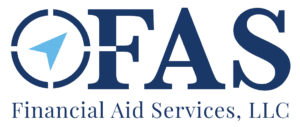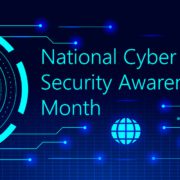Financial Aid Software: Let’s Assess the Situation
By: Tiffany W. Motyka, EdD, Senior Consultant
Before the years of FAFSA Simplification, there were still those moments in a Financial Aid Office that made seasoned financial aid administrators doubt efficiency, acumen, and purpose.
Every financial aid administrator has spoken to a student or parent and heard:
“You are the third person I have spoken to, and I still don’t have my questions answered.”
“My account shows that my scholarship was removed, and I don’t know why.”
“Someone told me I’m no longer eligible for my Pell Grant. How is that calculated? Where do I see that on my account?”
“I’m going to call the President if my account is not updated soon.”
These interactions diminish the good work of a Financial Aid Office, and the institution, if not handled correctly and with confident communication. In addition to enhancing the student experience, there are external pressures. Reporting must be maintained for an institution to complete fiscal reports and successfully complete annual audits and budgetary forecasting. Financial aid administrators and Student Business Service officers are required to understand the funds being awarded, the funds being disbursed, and the understanding that the recipient is indeed eligible for the funding at the time of disbursement. When awards are not disbursed and a student refund is late, if aid is reduced, or if late requirements prevent awarding overall, the employees must be able to identify the issue and assist the student. This opportunity to provide excellent customer service is imperative to a successful institution.
A successful institution may have a plethora of internal technologies to process aid and conduct these daily operations.
These platforms include instant messaging, sharing documents, containing student information, accepting admissions applications, queuing walk-in students, creating and pulling data and reports, and many others. Using these platforms collaboratively to assist students, process aid, remain in compliance, and enforce confidence in a staff of financial aid administrators requires training and periodic assessment of success metrics.
Does your institution have documentation and process maps to the questions below? Do you know how to leverage your technology to address these questions?
“Is the federal Pell Grant and the Direct Loan Program reconciled and are we able to successfully close-out for the year?”
“What updates are needed on the FISAP after we submit due to grant and work-study award changes and how are we tracking these changes?”
“Are we going to lose funding in our annual federal work-study or SEOG allocation due to an underuse penalty? How do we prevent this in the future?”
“What does a “free tuition” program mean from our state aid office and how do we ensure we are accurately awarding institutional aid?”
“How do we implement our new student discounting schema this year and process remaining packaging accurately to remain within budgetary guidelines?”
“Should our student information system not allow reporting of Gainful Employment data or Federal Work-study wages, is there a workaround for ensuring we still meet the regulatory deadlines?
“How will we update our E-App, PPA, or ED portal user authorizations now that our financial aid director has retired?
“We complete this regulatory process manually but is there a way to use our SIS to complete this more efficiently?”
“How do we bring more technology understanding back to the Financial Aid Office?”
“How do we use the customer service platform provided by our Student Information System when we experience errors and need a user guide for New Aid Year implementation?”
FAS Consultants possess the rare combination of technology acumen plus financial aid expertise. Spend time with the talented team of consultants at Financial Aid Services, LLC who can work with your institution to help you leverage your technology:
- Initial Assessment: FAS will review your process maps and conduct SWOT analysis identifying the strengths in how you are leveraging technology while identifying the major opportunities to make gains. We’ll review manual processes and time lags that could be optimized.
- Technology Optimization: FAS will provide you a detailed roadmap of how you can best utilize your technology and optimize Financial Aid functions. We don’t just optimize your tech. We’ll come alongside and teach you.
Ready to transform your financial aid operations? Discover how our Tech Optimization Services can streamline processes, boost compliance, and elevate the student experience. Learn more about making your technology work smarter for you!










